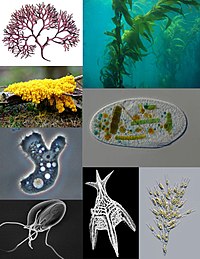
Photo from wikipedia
Simple Summary The habitat of wetlands, especially coastal mudflat wetlands, has been seriously threatened by species invasion in recent years, as globalization has progressed worldwide. In this study, we compared… Click to show full abstract
Simple Summary The habitat of wetlands, especially coastal mudflat wetlands, has been seriously threatened by species invasion in recent years, as globalization has progressed worldwide. In this study, we compared the invasive species Spartina alterniflora with the native species Phragmites australis to reveal the effects of invasive plants on species diversity and functional traits of Collembola and explore the adaptation patterns of wetland Collembola in various vegetation and soil depths. We reveal how invasive plants affect coastal mudflat wetlands and offer a reference for conserving wetlands from the perspective of soil fauna. Abstract The group of soil arthropods known as Collembola is characterized by its abundance and sensitivity to environmental changes. They are ideal an species for soil indicators. In order to clarify the effects of species invasion and inundation on the Collembola community in coastal mudflat wetlands, the correlation between the collembolan functional traits and environmental factors was studied in Shanghai Jiuduansha Wetland National Nature Reserve for the first time. Five sample plots, including three vegetations—Spartina alterniflora (an invasive species), Phragmites australis, and Zizania latifolia—were set up following the differences in vegetation types and between high and low tidal flats. Data on the diversity of the Collembolan species and their functional traits were collected and combined with the soil physicochemical properties and vegetation environment factors in different tidal flats. The key findings and conclusions of the study are as follows: a total of 18 species, four families, and three orders make up the obtained Collembola, two species of Proisotoma are dominant species that account for 49.59% and 24.91% of the total, respectively. The maintenance of the species diversity of Collembola is disturbed by the higher conversion efficiency of Spartina alterniflora rather than Phragmites australis with lower organic carbon (C) content and higher total nitrogen (N) content. The primary environmental variables influencing species distribution were the C/N ratio, total N, and bulk soil density. The bulk density of the soil impacts the movement and dispersal of the functional traits. The depth of the soil layer is related to the functional traits of the sensory ability. The analysis of the functional traits and environment is fairly helpful in exploring how species respond to their environment and offers a better explanation for the habitat selection of Collembola.
Journal Title: Insects
Year Published: 2023
Link to full text (if available)
Share on Social Media: Sign Up to like & get
recommendations!